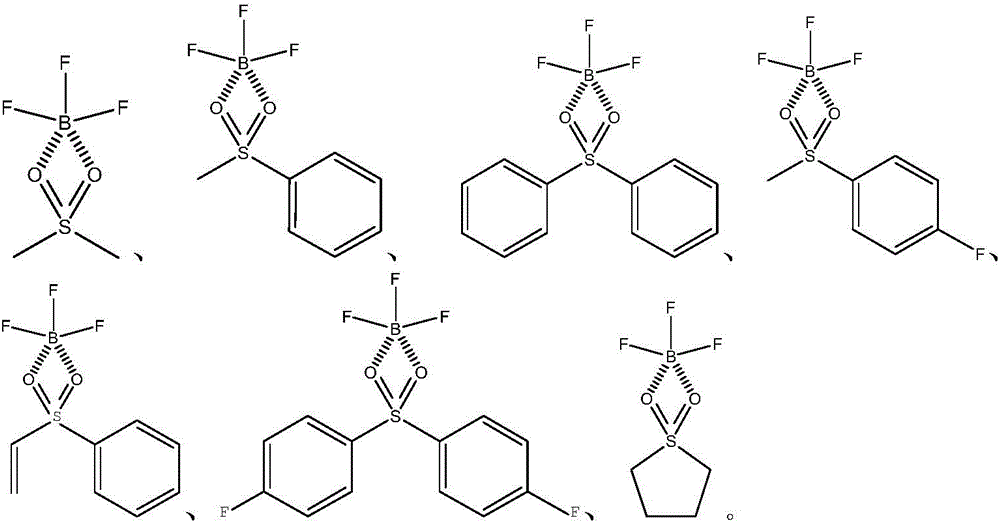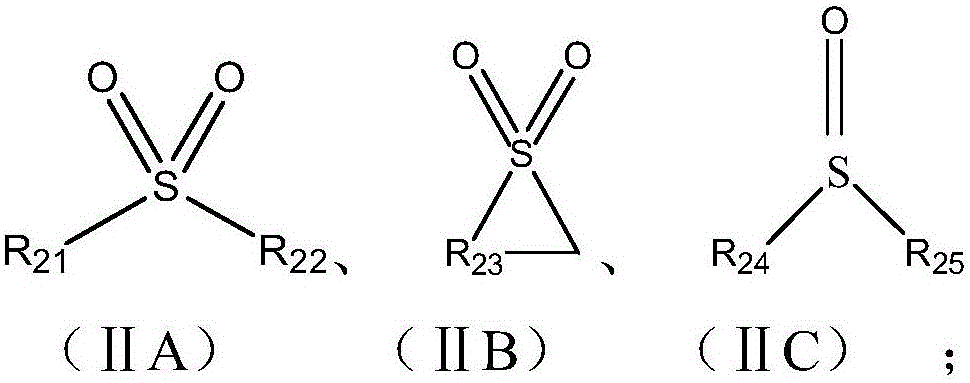Electrolyte and lithium battery
An electrolyte and electrolyte technology, applied in the field of lithium-ion batteries, can solve the problems of reduced structural stability of positive electrode materials, leakage of flammable electrolyte, consumption of electrolyte, etc., to improve high-temperature storage performance and cycle performance, and improve high-temperature cycle and storage properties, and the effect of inhibiting oxidative decomposition
- Summary
- Abstract
- Description
- Claims
- Application Information
AI Technical Summary
Problems solved by technology
Method used
Image
Examples
Embodiment
[0103] The present application is further described below through specific examples. However, these examples are merely exemplary and do not constitute any limitation to the protection scope of the present application.
[0104] In the following examples, comparative examples and test examples, the reagents, materials and instruments used are conventional reagents, conventional materials and conventional instruments unless otherwise specified, and are commercially available, and the reagents involved are also available commercially. It can be synthesized by conventional synthetic methods.
[0105] Preparation of the electrolyte: In an argon atmosphere glove box with a water content 6 Dissolved in the above non-aqueous solvents to form LiPF 6 Basic electrolyte with a concentration of 1mol / L.
[0106] As shown in Table 1, add sulfone-boron trifluoride coordination compound and SEI film-forming additive into the basic electrolyte.
[0107] Examples of sulfone-boron trifluoride ...
PUM
 Login to View More
Login to View More Abstract
Description
Claims
Application Information
 Login to View More
Login to View More - R&D
- Intellectual Property
- Life Sciences
- Materials
- Tech Scout
- Unparalleled Data Quality
- Higher Quality Content
- 60% Fewer Hallucinations
Browse by: Latest US Patents, China's latest patents, Technical Efficacy Thesaurus, Application Domain, Technology Topic, Popular Technical Reports.
© 2025 PatSnap. All rights reserved.Legal|Privacy policy|Modern Slavery Act Transparency Statement|Sitemap|About US| Contact US: help@patsnap.com



